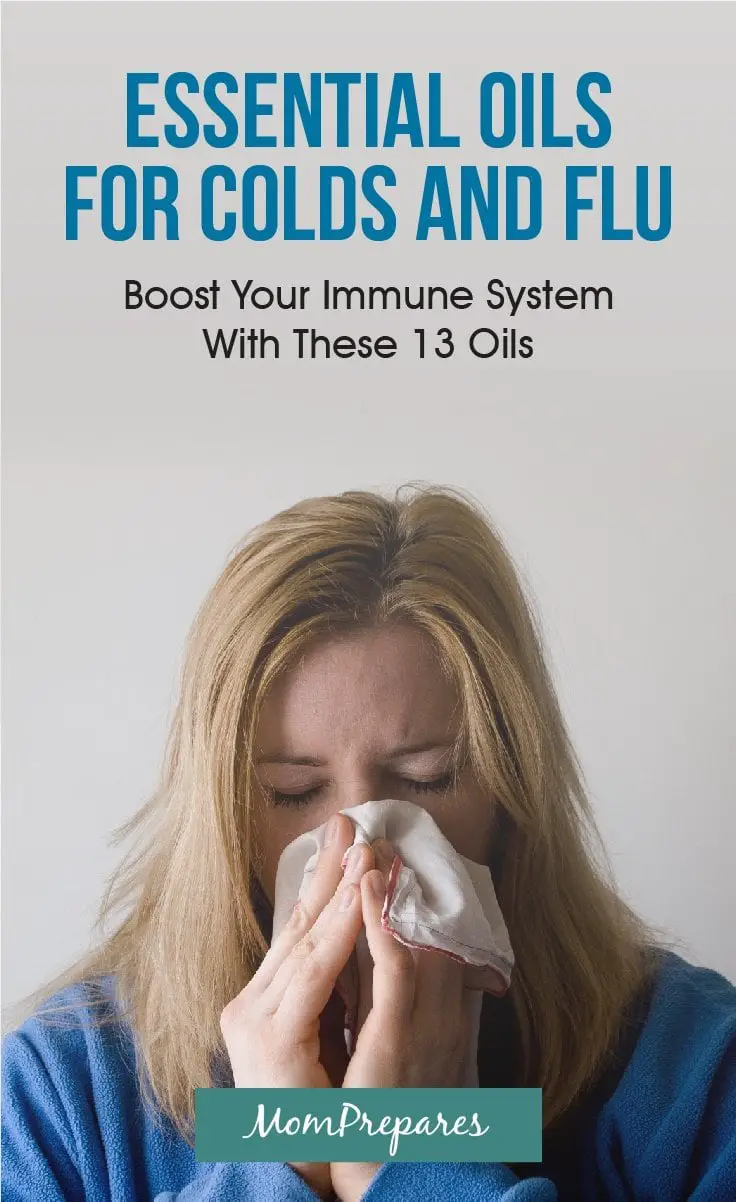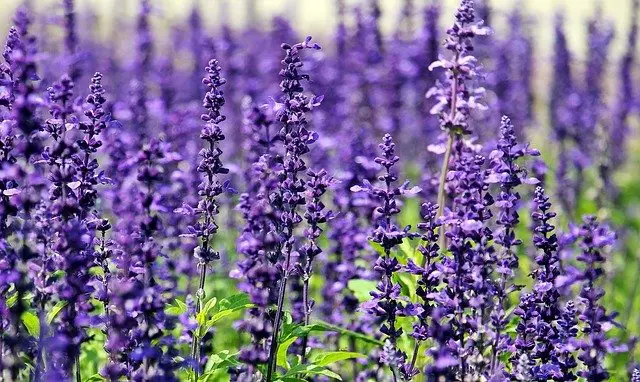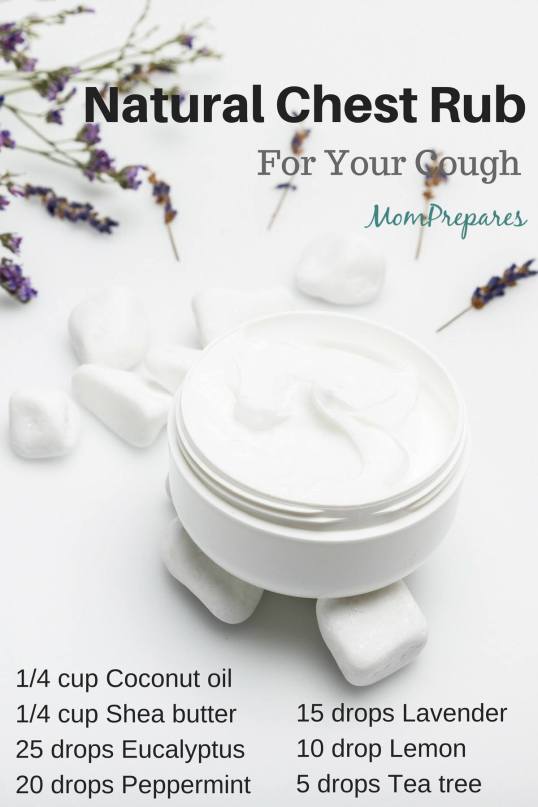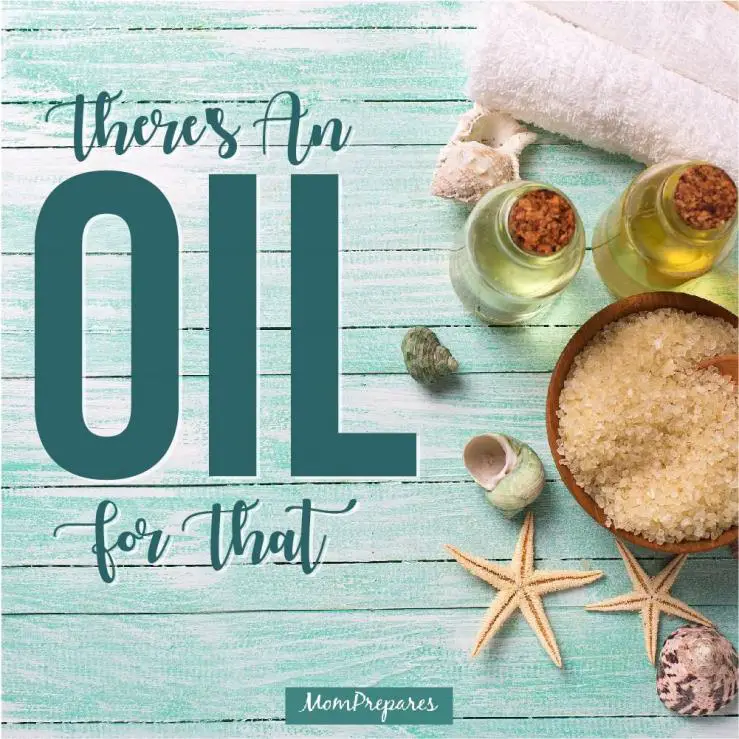It all starts with a tickle in the throat. Your nose starts running, and you’re getting the dreaded body ache. This is it…
you feel a cold coming on.
But you’re not alone.
Around 5-20 percent of the American population gets the flu every year. For colds, that number can hit roughly one billion people annually.

The worst part is that there isn’t much you can do about it. With the average cold lasting 7-14 days, your best solution for healing is time.
But there are ways you can speed up the process.
There are natural treatments you can explore like using essential oils for cold and flu. Oils like eucalyptus radiata, lavender, peppermint, and tea tree possess antibacterial, antiviral or other healing properties that are known to help boost your immune system.
If you want a ticket to rapid recovery, then keep reading. Because we’re about to dive into an ocean of research and recipes that will have you feeling better in no time.

What essential oils are good for colds?
When you get a cold, your instincts may tell you to rush and get antibiotics. This is not a wise choice and is not recommended. It can do you more harm than good.
The simple explanation for this is that antibiotics fight bacteria. Colds are caused by viruses, so no amount of something that kills bacteria is going to help.
There is no cure for the common cold. Some helpful tips on getting rid of a cold include getting plenty of rest, staying hydrated, and adding moisture to the air.
And since you’re going to be adding moisture to the air to soothe that dry nose and itchy throat anyway, here are some oils to add to your humidifier:
Cardamom (Elettaria cardamomum)
Cardamom offers a whole host of benefits. Once you experience this oil, you will want to always keep it on hand for stomach bugs and anything else that may have you feeling down.
Even though it’s likely what you have isn’t literally stomach virus, Cardamom can ease flatulence, abdominal cramps, irritable bowel syndrome and can also help with Crohn’s disease.
Eucalyptus Radiata
Eucalyptus radiata is both antibacterial and antiviral. You are likely to find eucalyptus in a variety of commercial preparations for respiratory ailments because of this.
The high 1,8-cineole (eucalyptol) content in this essential oil makes it anti-inflammatory. It is also a bronchodilator and a mucolytic, so it opens the airways and breaks up mucus.
This makes it an excellent choice for respiratory conditions. If you have a stuffy nose, cough, and congestion, or want something for head cold symptoms, eucalyptus is an excellent choice as long as you are healthy otherwise.
Geranium (Pelargonium graveolens)
Many people enjoy the smell of geranium. But the scent is just one of its many charms. It is antiseptic and antibacterial, which not only makes it great in blends but can help you disinfect the air and surfaces in your home.
Geranium is relaxing as well and can help mask the odor of more medicinal oils that may be in blends for sickness.
Lemon (Citrus limon)
Lemon oil helps invigorate the lymphatic system, which can be sluggish in times of illness. It may surprise you to know that even though the scent is stimulating, this oil is quite calming and can actually act as a mild stimulant.
This is a photosensitizing oil, and should not be used on the skin undiluted or before going out in the sun.
Peppermint (Mentha piperita)*
Along with ginger, peppermint tea has long been used to reduce nausea and make people feel better.
If you have been exposed to oils for any length of time, I’m sure you’ve heard someone recommend peppermint oil for coughs at some point.
Many commercial supplements contain peppermint. It can help for a variety of ailments including gastrointestinal issues, respiratory and sinus infections, and coughs and colds.
The oil is an excellent choice for its immune-boosting benefits during times of illness.
Rosemary (Rosmarinus officinalis)*
Rosemary is one of those oils to have on hand all of the time. It can help soothe aches and pains that come with the cold and flu and is helpful to diffuse for a cough.
Not only this, it can help calm anxiety that may be plaguing you while you’re ill and can help ease your pounding head as well.
Thyme linalol (Thymus vulgaris ct. linalool)
Both of these oils are a good choice. There are numerous variations and chemotypes of thyme. Both of these have antibacterial, antiviral, and antifungal properties.
Thyme has been used throughout history for medicinal purposes. Hippocrates even recommended the herb for respiratory conditions, and we can still benefit from it today.
Don’t worry. We’ll get into a number of practical diffuser recipes for colds in a bit.
What essential oils are good for the flu?
Flu symptoms include chills, fever, general body aches and pains and more.
In short, it makes you feel miserable.
Influenza shots are the body’s best defense against catching the flu. It is not always effective, and you may end up getting sick even if you have been vaccinated.
If you come down with the flu, plenty of rest and fluids are required. You should stay home from work or school to avoid spreading the virus, wash your hands often, and cover your mouth when you cough or sneeze.
Antiviral medications may work to shorten the illness if you get them within 48 hours.
In addition to the oils above, the following have antimicrobial and other properties to help with the flu:
Ho Wood (Cinnamomum camphora ct. linalool)
Ho wood has a high linalool content, which makes it an excellent choice for the immune system. It is also an interesting oil that is uplifting yet comforting.
Lavender (Lavandula angustifolia)
Lavender oil has over 100 constituents that all work synergistically. It is a catch-all oil that is good for pretty much anything, from perfumes to clinical applications.
The oil works on all of the bodily systems, including those affected by the flu like the respiratory, digestive, and immune systems.
It is excellent for the nervous system and can help muscular aches and pains.

Niaouli (Melaleuca quinquenervia)
Niaouli oil is beneficial for the immune systems and respiratory conditions due to its high cineole content. You may find it listed in the ingredient list of commercial cough drops and gargles.
For the flu, it has the added benefit of being able to calm the aches and pains that come with the illness.
Palmarosa (Cymbopogon martinii)*
This oil, also known as “Turkish geranium,” is an antiseptic, bactericidal and all around anti-infectious oil that can also work to reduce fevers.
Besides that, it works as a stimulant on the circulatory and digestive systems and is beneficial to the respiratory system as well.
Ravensara (Ravensara aromatica)*
This oil is a wonderful addition to fight illnesses. It can soothe skin conditions that arise like chicken pox, cold sores, and more.
Ravensara also helps with viral infections like the flu as well as bacterial infections.
Ravintsara (Cinnamomum camphora ct. cineole)*
Bronchial and respiratory issues can be eased with ravintsara oil, and the oil helps to loosen mucus.
It is antibacterial, anti-infectious, antiseptic, antiviral, and is an expectorant that boosts immunity.
How do I use the oils?
Oils can be used for sickness in a variety of ways. Let’s jump into some recipes, methods of use and the best essential oil blends for a variety of conditions that come with the cold and flu.
On Cotton Balls
One of the most straightforward methods of inhalation for EOs is to put them on cotton balls. Put a drop or two of a singular oil or oil blend on a cotton ball. Put it in a small Ziploc bag and inhale throughout the day when needed.
- Peppermint and eucalyptus oil can both help open the airways. You can use them separately or together for sinus congestion, lung congestion, or for respiratory issues of any kind.
- Eucalyptus oil as a nasal decongestant works exceptionally well.
- Those with chronic chest congestion issues like bronchitis and COPD, elderly people, or anyone pregnant or nursing should choose Eucalyptus radiata. Don’t use eucalyptus this way for children.
- Lavender oil is great for headaches and to help get the rest you need.
- You can use oregano oil for cold symptoms as well.
In Diffusers, Vaporizers, or Humidifiers
Dry air can cause a host of problems, including chapped lips, dry skin, itchy eyes, and can help spread sickness, especially sinus conditions and viral infections.
Luckily, there are methods we can use to add humidity back to the air. When adding essential oils to the water in these, we can disinfect the air, ease a cough and sore throat, and much more.

Here are some specific blends that work for various symptoms:
Head Colds:
- 10 drops Ravensara
- 5 drops Ho wood
- 5 drops Palmarosa
- 5 drops Thyme linalol.
Mix together and add six drops to diffuse for colds.
Coughs With Mucus
- 2 drops Eucalyptus radiata
- 2 drops Thyme linalol
- 1 drop Tea Tree
- 1 drop Geranium
Add this mix to your diffuser or another humidifying method.
Sinus Congestion
- 2 drops Cardamom
- 2 drops Rosemary
- 1 drop each Eucalyptus, Peppermint, and Tea Tree
This blend works well to either diffuse or add to a bowl of hot water for steam inhalation. Place your head over the bowl and a towel on the back of your head and breathe in the steam for 10 minutes or so, until the water cools.
Toddler Cold
If you are dealing with a little one who’s sick, don’t use the steam inhalation method as they can burn themselves with the hot water. For a toddler cold, diffuse a five-drop mix of any of the following oils:
- Chamomile, Roman
- Geranium
- Lavender
- Palmarosa
- Ravensara
- Tea Tree
The above oils are appropriate for babies and children above seven months old.
Massages and Body Oils
Another way to get the therapeutic effects of the top essential oils listed is by blending them together, adding to a carrier, and using them as a body oil for massage.
Dry Cough:
A dry cough can be helped by blending three drops of Eucalyptus radiata with two drops of Thyme linalol. Add this to a teaspoon of carrier oil and rub a small amount on the back and chest twice daily.
If you have a cough and phlegm or chest pain, we have a great chest rub for cough on the site that you can use instead of commercial applications like Vick’s.

Colds:
To ease cold symptoms using massage, mix a teaspoon of carrier oil with two drops each of Eucalyptus and Rosemary, along with one drop of Lemon. Rub a bit over the temples, forehead, chest, and neck areas.
For Fever:
More often than not, these illnesses come with a raised temperature. Luckily, there are essential oils that are antifebrile, which means they can help reduce fevers.
Adding two drops of Eucalyptus radiata, Lavender, or Peppermint to a bath will have a cooling effect. Be sure to mix the drops with a little carrier oil or aloe vera juice before adding to the bath water.
Alternatively, you can add a drop of one of these to a little aloe and swish it in a bowl of cool water to use to sponge the person down.
For Diarrhea
No one likes to talk about it, but it happens.
And while it is a miserable situation, oils can help ease the severity of diarrhea symptoms. Add a five-drop mix of any of the following oils to a teaspoon of carrier oils and rub a small amount over the abdomen, up to three times daily:
- Eucalyptus
- Lavender
- Lemon
- Tea Tree
- Thyme
There are other oils that can be used to combat colds or for flu symptoms.
If you saw a recipe above that you really like, but don’t have all of the oils included, no worries!
Here are some great substitutions so you can experiment making your own blends. See what you have, and mix and match to see what you like and what works in your house.
- Oregano (Origanum vulgare)
- Cinnamon Leaf (Cinnamomum zeylanicum)
- Clove Bud (Syzygium aromaticum)
- Basil linalol (Ocimum basilicum ct. linalol)
- Frankincense (Boswellia carterii)
Just remember that with oils, less is more. Here are a handful more tips for you to get rid of that cold.
- 3-8 drops of single or blended oil are suitable for a bath. Mix with a teaspoon or tablespoon of carrier or aloe vera juice first.
- For compresses, whether hot or cold, disperse 3-10 drops of oil in water prior to soaking.
- Cotton swabs or tissues only need a drop or two.
- Follow your diffuser instructions to determine the number of drops.
- For humidifiers, use up to eight drops per pint.
- If using a bowl of water for inhalation, only 3-5 drops are needed.
- Ten to 30 drops of essential oil can be added to each ounce of carrier oil (30 mL). Use sparingly over the area being massaged.
- Purify the air by adding 10-20 drops of your favorite viral-busting oil or blend to a pint of water in a spray bottle. Shake well before each use.
Is there any way to prevent colds and the flu?
The best medicine is prevention. When it comes that time of year when everyone is getting sick, it’s natural to want to protect your family.
Unfortunately, there is no absolute protection against bacteria and viruses that can guarantee to keep you 100 percent healthy.
That being said, there are measures you can take to help keep viruses and sickness at bay.
Here is a great aromatherapy immune system booster to keep you feeling your best:
- 6 drops Geranium (Pelargonium graveolens)
- 5 drops Eucalyptus (Eucalyptus radiata)
- 5 drops Tea Tree (Melaleuca alternifolia)
Diffuse these oils throughout the day.
There are special circumstances to be aware of when using essential oils for congestion, colds, and the flu.
Children, Elderly, and the Chronically Sick
Care must always be taken around particular groups of people. Babies and toddlers are especially susceptible to being harmed by oils.
For instance, there have been cases of seizures due to eucalyptus oil in small children.
Asthmatics
People with asthma can have severe attacks just being around essential oils. Even recipes for breathing them in can be dangerous.
Please use care when diffusing around asthmatics as well as giving them any other type of remedy involving essential oils.
Pregnancy and Breastfeeding
Anyone who is pregnant or breastfeeding should always be careful what they breathe in, ingest, or use on their body topically. While many oils are safe, others are not. The oils marked ‘*’ in this post should not be used.
Conclusion
You know the saying “there’s an app for that?”
Well, no matter what you have going on in your life, there’s an oil for that!

The awesome thing about essential oils is that quite often, you can choose your own healing methods, so to speak.
Just be sure to take note of the cautions and amounts listed above, especially during pregnancy or for youngins’ or the elderly.
Armed with a little knowledge about the best oils for cold and flu, you can create your own personal blends to help ease you back to health.
Or, to help you not get sick in the first place!
Do you use oils for colds and flu? I’d love to hear what you do for some natural immune boosters!
Thanks you for the great news about essential oils. I truly believe in them. They have helped me so much. I have gotten off of a lot of my respitory medications. Please keep sharing and helping people get better without so many side effects.
Thank you for your kind words :) We’ll keep at it!